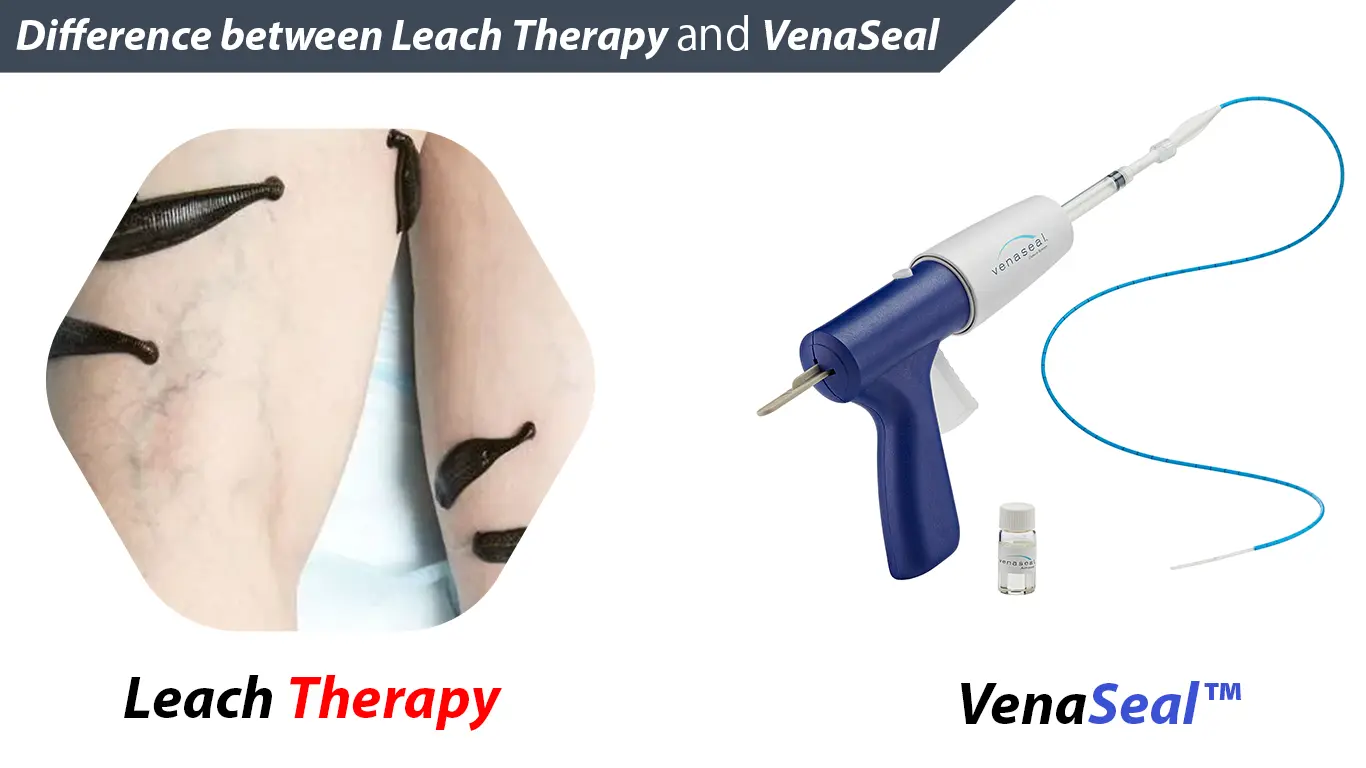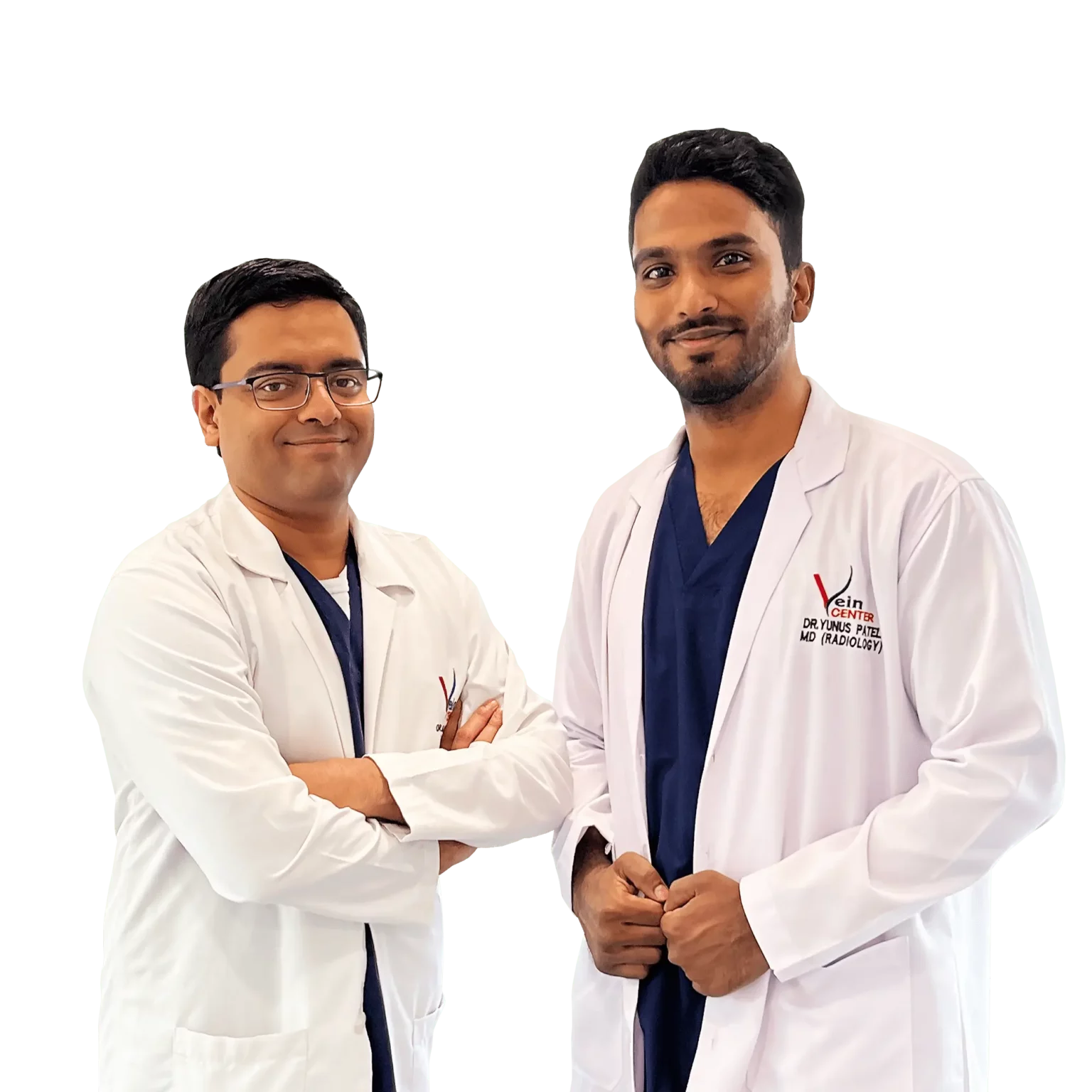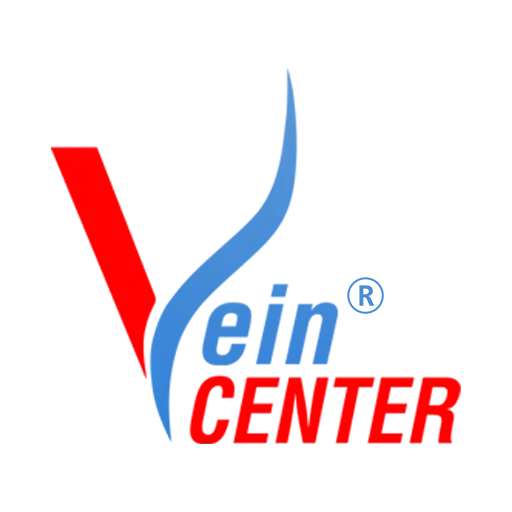Know more about Leech Therapy and VenaSeal Treatment procedures for Varicose Veins.

Leech therapy and VenaSeal represent two different approaches to treating medical conditions related to blood flow and venous disorders. Leech therapy, rooted in traditional medicine, uses live organisms to improve blood circulation, while VenaSeal is a modern, scientifically validated treatment for varicose veins and chronic venous insufficiency. Both methods aim to address blood-related conditions, but they differ significantly in terms of technique, effectiveness, and risks.
Leech Therapy
Leech therapy (hirudotherapy) is an ancient practice that involves applying medicinal leeches (Hirudo medicinalis) to the skin to treat venous congestion and improve blood flow. Despite its historical use and limited modern applications, particularly in plastic and reconstructive surgery, leech therapy presents several challenges, especially when treating conditions like varicose veins.
Application:
Medicinal leeches are placed near the affected area where they attach and feed by biting into the skin. The leeches release hirudin, a natural anticoagulant, to keep the blood from clotting, allowing them to feed for about 30 to 60 minutes.
Mechanism:
In addition to hirudin, leech saliva contains anti-inflammatory, vasodilatory, and anesthetic compounds that promote blood circulation. The anticoagulant effect can last for several hours after the leech detaches, improving blood flow in congested or damaged areas.
Conditions Treated:
Leech therapy is used for venous congestion, blood clotting disorders, chronic wounds, and in microsurgery to restore blood flow to damaged tissue, like reattached body parts. Its use in varicose veins is limited and comes with significant risks compared to modern treatments.
Post-treatment Care:
After a session, wounds may ooze for hours due to the anticoagulants, requiring careful wound management. Compression bandages are often used to control the bleeding and prevent infection.
Challenges and Risks
Patients undergoing leech therapy, particularly for varicose veins, face potential risks, especially infections. Aeromonas hydrophila, a bacteria commonly found in leeches’ digestive tracts, can be transmitted during feeding, leading to bacterial infections in patients. While leeches are sterilized before use, maintaining their sterility throughout the process is difficult. The live organism factor increases the risk of contamination and complications, making infection a significant concern in medical settings.
Certifications and Approvals
FDA Approval: Leech therapy is FDA-approved (since 2004) for specific medical applications, particularly in microsurgery and reconstructive surgery to improve blood flow to tissues at risk of necrosis.
CE Marking: In Europe, leech therapy is regulated as a complementary medicine and carries a CE mark for specific uses in clinical settings. However, its use in treating varicose veins is less common and not widely recommended due to infection risks.
VenaSeal™ Closure System
VenaSeal is a modern, minimally invasive treatment used to treat varicose veins and chronic venous insufficiency. It involves sealing off malfunctioning veins with a medical adhesive, allowing blood to flow through healthier veins.
Procedure Overview:
VenaSeal is performed as an outpatient procedure. A small catheter is inserted into the diseased vein, and a proprietary cyanoacrylate adhesive is injected to close the vein. This stops blood flow in the affected vein, and the body naturally reroutes blood through healthier veins.
Mechanism:
The VenaSeal adhesive is biocompatible and quickly solidifies, sealing the vein permanently. Unlike thermal-based treatments, VenaSeal does not use heat or require large amounts of local anesthesia.
Conditions Treated:
VenaSeal is specifically designed for treating varicose veins and chronic venous insufficiency, conditions that result from weak or damaged vein valves. It is particularly useful for large saphenous veins and patients who are not ideal candidates for more invasive treatments.
Post-treatment Care:
A key benefit of VenaSeal is that it does not require patients to wear compression stockings after the procedure, which improves comfort and patient compliance. Recovery is rapid, and most patients can resume normal activities immediately.
Certifications and Approvals
FDA Approval: VenaSeal was FDA-approved in 2015 following rigorous clinical trials that demonstrated its safety and efficacy in treating venous insufficiency. The procedure is widely recognized and trusted by healthcare providers.
CE Marking: VenaSeal is CE marked and complies with European Union health and safety standards. It is widely available in Europe and other countries that recognize CE certification.
Clinical Studies: Extensive clinical trials have shown that VenaSeal provides long-term relief from varicose veins, with success rates remaining high for years after the procedure.
Comparison of Leech Therapy and VenaSeal
Method
Leech Therapy: Medicinal leeches applied to the skin to improve blood circulation and reduce congestion.
VenaSeal: A catheter-based adhesive treatment that seals off damaged veins.
Mechanism
Leech Therapy: Leech saliva contains hirudin (anticoagulant), anti-inflammatory, and anesthetic compounds that promote blood flow.
VenaSeal: Cyanoacrylate adhesive is injected into the vein, sealing it off and rerouting blood through healthier veins.
Procedure Duration
Leech Therapy: 30 minutes to 1 hour per session.
VenaSeal: 30–45 minutes, typically a single session.
Recovery
Leech Therapy: Mild oozing from the wound; compression bandaging.
VenaSeal: Immediate return to normal activities, no need for compression stockings.
Conditions Treated
Leech Therapy: Venous congestion, blood clotting disorders, used in reconstructive surgery.
VenaSeal: Chronic venous insufficiency, varicose veins.
Post-treatment Care
Leech Therapy: Requires monitoring of wounds; potential for infection.
VenaSeal: Minimal; no compression required.
Certifications
Leech Therapy: FDA approved for reconstructive surgery; CE marked.
VenaSeal: FDA approved and CE marked for venous insufficiency.
Effectiveness
Leech Therapy: Useful for short-term blood flow improvement, especially in microvascular surgeries.
VenaSeal: Long-term results with high success rates in treating varicose veins and venous insufficiency.
Infection Risk
Leach Therapy: High, due to the bacteria in leech saliva and challenges of maintaining sterility.
VenaSeal: Low, performed in sterile conditions without live organisms.
Why we recommend VenaSeal?

Leech therapy and VenaSeal are both effective treatments in their own domains, but they are used for vastly different purposes. Leech therapy is primarily a complementary treatment, useful in reconstructive surgeries and venous congestion, whereas VenaSeal is a highly specialized, modern treatment for chronic venous insufficiency and varicose veins.
VenaSeal stands out for its minimal invasiveness, rapid recovery, and high clinical success rate, making it the preferred option for patients with venous insufficiency. Leech therapy, while valuable in certain cases, is typically reserved for more niche medical applications and is not as widely accepted for treating varicose veins compared to VenaSeal.
In terms of certifications, both treatments are FDA-approved and CE-marked, but VenaSeal has more rigorous clinical trials supporting its effectiveness for long-term vein treatment, while leech therapy’s use is more limited to short-term blood flow management in surgical settings.
Leech therapy is a traditional practice that still finds use in specific medical applications, such as microsurgery, but its infection risk, especially for varicose veins, cannot be ignored. Keeping live leeches sterile throughout the process is challenging, and infections from bacterial contamination remain a significant concern. In contrast, VenaSeal offers a modern, controlled, and sterile alternative for treating varicose veins.
Why experiment when you can trust VenaSeal?
Proven, safe, and no need for compression stockings. Make the better choice today!
Fill the form to Get a Call Back
Our patient coordinators will contact you on your phone number with more details.
